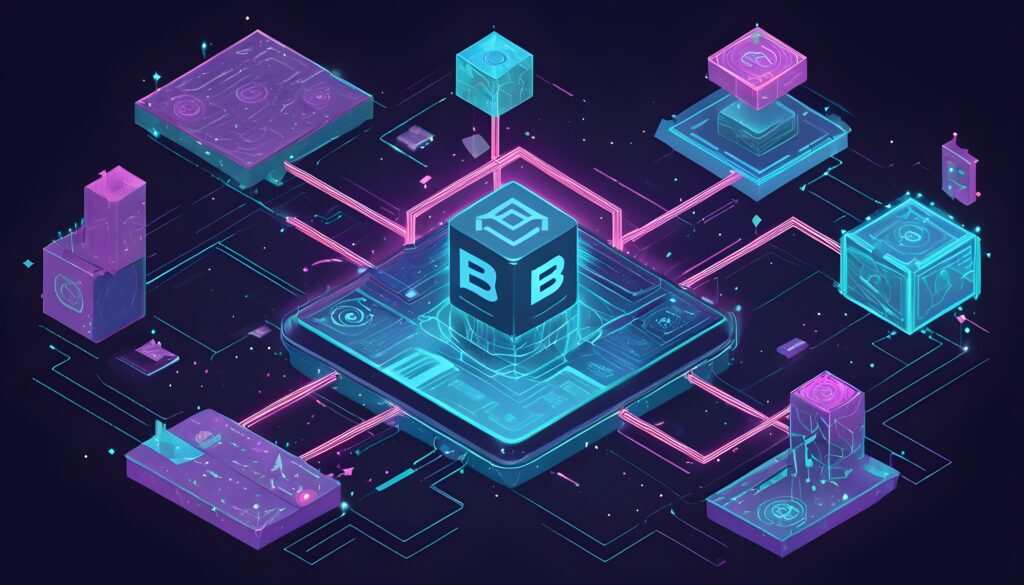The cryptocurrency sector has witnessed a number of interesting changes since Bitcoin made its debut in 2009. From the proliferation of altcoins to the ICO boom of 2017, the NFT frenzy of 2021, and the metaverse, one area that is hardly talked about is the “masternode” niche.
Although masternodes had their fair share of media attention in 2021, it appears the masternode sector has completely sunk into oblivion. While non-fungible tokens (NFTs) and decentralized autonomous organizations (DAOs) have gained widespread attention, masternodes remain a relatively unknown aspect of the cryptocurrency sector. However, masternodes are still one of the top ways to earn passive income from cryptocurrencies.
In this article, we take you through most of the things you need to know about masternodes – what they are, their history, and how to set up one.
What is a Masternode?
A masternode is a type of blockchain node that performs special functions in securing and governing a blockchain network. Although the responsibilities of a masternode can vary from one blockchain to another, these functions typically include instant or private transactions, budgeting and treasury management, and voting on governance issues within the network. To better understand what a masternode is, let’s explore what a node is.
A node is a component of a blockchain that connects to a cryptocurrency network and participates in the validation and propagation of transactions on that network.
Nodes play an important role in maintaining the security and decentralization of cryptocurrency networks. They help to validate transactions, ensure that the network adheres to its consensus rules, and maintain copies of the blockchain ledger. Nodes can also broadcast new transactions and blocks to other nodes on the network, helping to propagate new transactions and updates to the blockchain.
Nodes can come in different types – full nodes, pruned full nodes, light nodes, miner nodes, authority nodes, and masternodes – depending on the specific cryptocurrency network and the role that the node plays. Full nodes are typically the most resource-intensive, as they maintain a complete copy of the blockchain ledger and validate all transactions on the network. To put things in perspective, as of September 2020, a full node for Bitcoin required over 300 gigabytes of storage space, which exceeds the capacity of many personal computers. Light nodes, on the other hand, may only maintain a subset of the blockchain data and rely on full nodes to validate transactions.
Proof-of-Work (PoW) systems use miners as their nodes, whereas in Proof-of-Stake (PoS) systems, staking wallets serve as nodes. Once a node broadcasts a new block containing a set of transactions to the network, all other nodes are responsible for verifying the block’s validity before it can be added to the blockchain.
That said, unlike full or light nodes that broadcast new transactions to the network, a masternode does not add new blocks to the blockchain. Their primary function is to verify transactions. Depending on the blockchain protocol they are involved in, they may also assume unique roles in management, governance, and regulation. It is worth mentioning that masternodes are often used in conjunction with other nodes on the network, such as full nodes and light nodes, to provide a range of services and functionality to users.
History of Masternodes
The masternode concept was first introduced in 2014 as a part of Dash cryptocurrency, originally known as Darkcoin. Dash’s founder Evan Duffield was interested in creating a cryptocurrency that would be faster and more private than Bitcoin, and he believed that masternodes could help to achieve these goals.
On Dash’s implementation, masternodes wield more power than regular nodes and offer valuable services, including the ability to send private transactions (PrivateSend) and instant transactions (InstandSend). These services play a crucial role in Dash’s PoSe ecosystem. Additionally, Dash masternodes play a governance role by being assigned a single vote to approve or reject new developments and protocol amendments on the Dash network.
To operate a masternode, users needed to stake a specific amount of Dash tokens. This serves as a collateral and barrier to prevent malicious actors from hijacking the network and to ensure the node’s commitment to the network.
The success of Dash’s masternode system inspired other cryptocurrencies to adopt similar systems. Today, many PoS cryptocurrencies use masternodes to provide additional features and benefits to users. There are over 100 masternode coins, with some of the most popular being PIVX, Syscoin, DIVI, and AXEL.
How do Masternodes operate?
Similar to proof-of-stake mining, masternodes depend on users to stake a certain amount of the network’s cryptocurrency as collateral. This amount varies depending on the specific network’s requirements. For example, the collateral to host a Dash masternode is 1,000 Dash tokens (approximately $57,000 at current market prices). Whereas, you will need 100,000 SYS tokens (about $17,000) to run a Syscoin masternode. The collateral is used to incentivize the masternode operator to act in the best interest of the network and provide quality services.
Once a user has the required collateral, they can set up and run a masternode by following the specific instructions provided by the network. Masternodes require specialized hardware and software, as well as a reliable internet connection, to function properly. To ensure the integrity of the network, masternodes are required to maintain a certain level of uptime and availability. If a masternode fails to meet these requirements, it may be penalized or even removed from the network.
In exchange for providing these services, masternode operators receive a portion of the block rewards or transaction fees, depending on the specific network’s incentive structure.
How to setup a Masternode
Setting up a masternode can be a complex process that requires some level of technical expertise. However, the general steps involved in hosting one include:
- Select a blockchain network that supports masternodes and select the cryptocurrency you want to use to run your masternode.
- Make sure you meet the requirements to operate a masternode. Typically, you will need to have a certain amount of the cryptocurrency being used as collateral, as well as a dedicated server, a reliable internet connection, and some technical expertise.
- Set up your server and install the necessary software. This will usually involve installing a full node of the blockchain network you have chosen and configuring it to run as a masternode.
- Generate a unique address for your masternode and register it with the network. This will usually involve sending a transaction to the network that includes information about your masternode, such as its unique address, collateral amount, and other details.
- Once your masternode is registered and online, it will begin performing its duties on the network and earning rewards for its services.
- As a bonus tip, regularly monitor your masternode to ensure it remains online and meets the requirements of the network. You may need to perform updates or maintenance on your server from time to time to ensure its continued operation.
Pros and Cons of running a Masternode
As with most aspects of cryptocurrencies and investments in general, running a masternode has its advantages and disadvantages.
Pros:
- Additional functionality: Masternodes can provide additional services beyond the basic validation and mining tasks performed by regular nodes, such as instant transactions and privacy features.
- Governance role: Masternode operators often have a voice in important network decisions, which can help ensure the long-term sustainability and growth of the network.
- Passive income: Running a masternode can be a way to earn passive income through the rewards received for providing services to the network.
- Network security: Masternodes help to secure the network by providing an additional layer of validation and protection against attacks.
Cons:
- Technical expertise: Setting up and maintaining a masternode requires a significant amount of technical expertise and investment, which can be a barrier for some users.
- High costs: Running a masternode requires a significant amount of collateral in the form of the cryptocurrency being used in the network, which can be a significant investment for some users.
- Uptime requirements: Masternode operators are required to maintain a high level of uptime and availability, which can be challenging for those without reliable servers or internet connections.
- Regulatory risk: Some jurisdictions may view masternodes as a form of security or investment, which could subject them to regulatory scrutiny or legal issues.
Conclusion
Masternodes remain an important and relatively docile aspect of the cryptocurrency sector. They play a crucial role in securing and governing blockchain networks and offer users the opportunity to earn passive income by staking cryptocurrency as collateral to operate a masternode. Although masternodes were first introduced in 2014 as a part of Dash cryptocurrency, they have since been adopted by many other PoS cryptocurrencies. Overall, masternodes are a fascinating aspect of the cryptocurrency sector and are worth exploring for those interested in blockchain technology and passive income opportunities.





